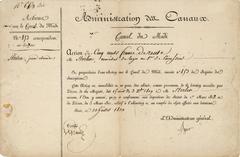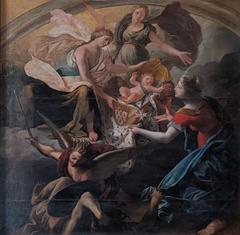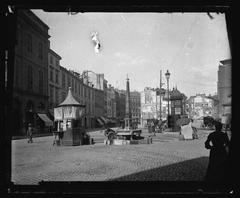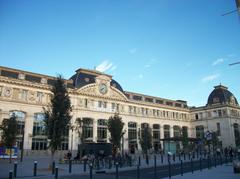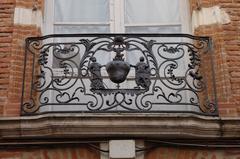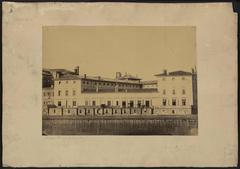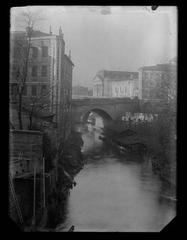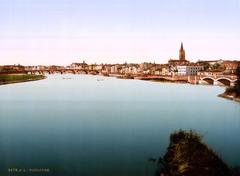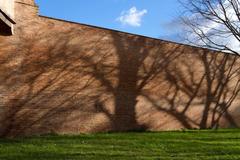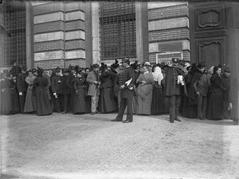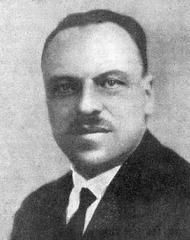Hôtel D’Astorg et de Saint-Germain Toulouse: Visiting Hours, Tickets, and In-Depth Visitor Guide
Date: 03/07/2025
Introduction
In the heart of Toulouse’s historic center lies the Hôtel d’Astorg et de Saint-Germain, a premier example of Renaissance architecture and a testament to the city’s vibrant urban aristocratic legacy. Built in the late 16th century, during Toulouse’s economic boom driven by the pastel (woad) trade, this grand hôtel particulier showcases the artistic and social ambitions of powerful local families. Its iconic pink brick façade, elegant stonework, Renaissance wooden galleries, and crenellated tower make it a must-see for anyone interested in Toulouse’s history and architectural splendor.
While the hôtel remains a private residence and is not regularly open to the public, its remarkable external features and central courtyard can be admired from the street or during special heritage events and guided tours. This guide provides a detailed overview of the Hôtel d’Astorg et de Saint-Germain’s historical context, architectural significance, practical visitor information, accessibility, travel tips, and connections to nearby attractions. For the most current visitor details, consult the Toulouse Tourism official website.
Table of Contents
- Historical Overview
- Visitor Information
- Travel Tips
- Nearby Attractions
- Special Events and Preservation
- Frequently Asked Questions (FAQ)
- Visual Gallery
- Conclusion and Planning Resources
- References
Historical Overview
Origins and Construction
Commissioned around 1589 by Guillaume de Saint-Germain, a municipal magistrate (capitoul), and later modified by his father-in-law Jean d’Astorg, the hôtel reflects the rise of Toulouse’s merchant elite. The pastel trade brought immense wealth to the region, enabling families like the Astorgs and Saint-Germains to build these opulent urban mansions (Toulouse Tourism). The hôtel’s name and evolving ownership encapsulate layers of social and economic history (source).
Architectural Features
The building is exemplary of Toulouse’s Renaissance style, combining local pink brick with finely cut stone around doors and windows. Its design features a crenellated tower, Renaissance wooden galleries, mullioned windows, and a central courtyard, all arranged to both impress and provide privacy. The structure also preserves rare wooden architectural elements, such as the “escalier suspendu” (suspended staircase) that demonstrates the technical mastery of Renaissance carpenters (source).
Notable Highlights:
- Façade: Harmonious blend of brick and stone, with commercial ground-floor boutiques.
- Courtyards: Two successive courtyards—one with a Gothic tower and Renaissance windows, the other with wooden galleries.
- Renaissance Windows: Elegant frames and Latin inscriptions reflecting humanist values.
- Unique Staircases: Two external wooden staircases, including the famed suspended staircase.
- Gothic Tower: The capitular tower features a ribbed vault forming the Occitan cross, symbolizing regional identity.
Urban Context and Social Significance
Located on rue des Changes, the hôtel sits at the intersection of Toulouse’s Roman and medieval urban fabric, close to civic and religious landmarks. Its construction embodied the social ascent and cultural aspirations of its owners, who hosted gatherings, negotiations, and events within its walls. The architecture and decorative program reflect the city’s openness to Italian Renaissance influences while remaining grounded in Occitan tradition (Patrimoine de Toulouse).
Visitor Information
Visiting Hours and Access
- Regular Access: The hôtel is primarily a private residence and is not open for daily public visits. The exterior can be viewed year-round from the street.
- Special Openings: During events such as the Journées Européennes du Patrimoine (European Heritage Days), the interior and courtyard may be accessible from 10:00 AM to 6:00 PM. Advance booking is recommended during these times (European Heritage Days).
- Official Updates: For the latest access information, always check the Toulouse Tourism official website.
Tickets and Guided Tours
- Admission: Free during public heritage events. Guided tours may require tickets, typically ranging from €5 to €10.
- Booking: Tours can be reserved through the Toulouse Tourism office or local agencies.
- Group Visits: School and group visits may require advance arrangements.
Accessibility
- Physical Access: The surrounding streets are pedestrian-friendly and accessible by public transport. The courtyard is generally level, but upper floors and certain features (e.g., spiral staircases) may not be accessible for visitors with mobility challenges.
- Assistance: Efforts are made to improve accessibility during special events; visitors with specific needs should contact the tourism office in advance.
Travel Tips
- Getting There: The hôtel is easily reached by public transport. The nearest metro stop is “Capitole.”
- Best Time to Visit: Spring and early autumn offer ideal weather for exploring the historic center.
- Amenities: Cafés, restaurants, and shops line rue des Changes and the surrounding area. Try local specialties like cassoulet and Gâteau du Fénétra (PlanetWare).
- Photography: Exterior and courtyard photography is generally permitted during open days—always respect posted guidelines.
- Language: While French is standard, many guides speak English.
Nearby Attractions
- Hôtel d’Assézat: Another Renaissance mansion, home to the Bemberg Foundation’s art collection.
- Place du Capitole: Toulouse’s bustling main square with historic city hall.
- Basilique Saint-Sernin: A UNESCO-listed Romanesque basilica.
- Musée des Augustins: Fine arts museum in a former monastery.
- Jacobins Convent: A Southern Gothic masterpiece with a unique palm-vaulted ceiling.
Special Events and Preservation
The Hôtel d’Astorg et de Saint-Germain is a protected Monument Historique (since 1925). Restoration work in the early 2000s sparked debates about balancing preservation with private ownership. Public access is primarily during annual heritage events, which offer rare glimpses into its interior spaces (Monuments Historiques).
Cultural associations and the municipality occasionally organize guided walks and educational programs highlighting the hôtel’s role in Toulouse’s Renaissance legacy.
Frequently Asked Questions (FAQ)
Q: Can I visit the interior of Hôtel d’Astorg et de Saint-Germain?
A: Regular interior visits are not available due to private ownership, but special openings occur during heritage events.
Q: Is there an admission fee?
A: Exterior viewing is free. Guided tours during special events may require a ticket.
Q: Is the site accessible for people with disabilities?
A: The courtyard is generally accessible, but some areas (e.g., upper floors, spiral staircases) may not be.
Q: How do I get to Hôtel d’Astorg et de Saint-Germain?
A: The site is centrally located, a short walk from the Capitole metro station.
Q: Are guided tours available?
A: Yes, especially during heritage days or with advance booking through the tourist office.
Visual Gallery
Alt text: Exterior façade of Hôtel D’Astorg Et De Saint-Germain, a Renaissance hôtel particulier in Toulouse. Alt text: Ornate inner courtyard of Hôtel D’Astorg Et De Saint-Germain showcasing Renaissance architectural details.
- Suspended wooden staircase and Gothic tower: remarkable carpentry and symbolic Occitan cross in vault ribs.
Conclusion and Planning Resources
The Hôtel d’Astorg et de Saint-Germain is a distinguished emblem of Toulouse’s Renaissance heritage—an architectural jewel whose story intertwines with the city’s social, economic, and artistic evolution. While access may be limited, the building’s façade and occasional open days offer a rewarding glimpse into the city’s golden age.
To enhance your visit:
- Plan around special events like the Journées Européennes du Patrimoine.
- Use the Audiala app for interactive guides, maps, and updates.
- Explore nearby sites for a comprehensive understanding of Toulouse’s historic fabric.
For the latest information, always consult the official Toulouse Tourism website.
References and Further Reading
- Discover the Hôtel d’Astorg et de Saint-Germain: History, Tickets, and Travel Tips in Toulouse, 2025
- Hôtel D’Astorg et de Saint-Germain: Visiting Hours, Tickets & Toulouse Renaissance Heritage Guide, 2025
- Hôtel D’Astorg et de Saint-Germain Architectural and Historical Overview, 2025
- The Crazy Tourist: Best Things to Do in Toulouse, 2025
- European Heritage Days Official Site, 2025
- Monuments Historiques
- PlanetWare: Toulouse Tourist Attractions
- Patrimoine de Toulouse

